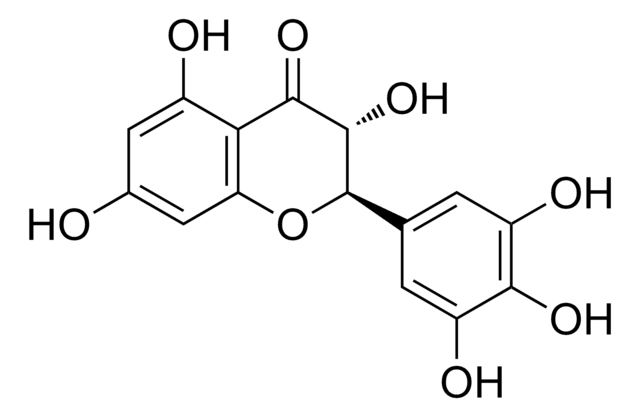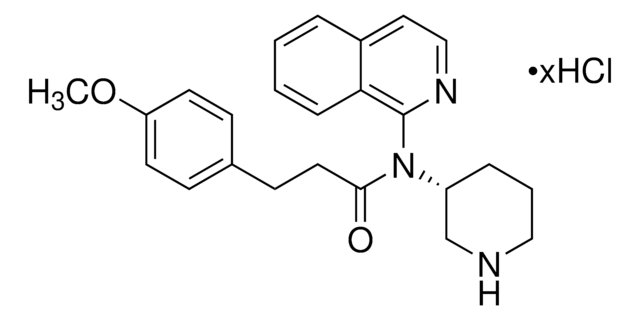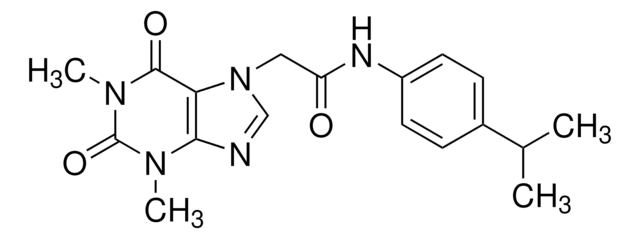SML1132
Pep2-8 trifluoroacetate salt
≥95% (HPLC), contains 58μL of solution at 10mM in DMSO
Synonym(s):
Ac-TVFTSWEEYLDWV-NH2 trifluoroacetate salt, Ac-TVFTSWEEYLDWV-amide trifluoroacetate salt, Ac-Thr-Val-Phe-Thr-Ser-Trp-Glu-Glu-Tyr-Leu-Asp-Trp-Val-NH2 trifluoroacetate salt
Sign Into View Organizational & Contract Pricing
All Photos(1)
About This Item
Empirical Formula (Hill Notation):
C83H110N16O24 · xC2HF3O2
Molecular Weight:
1715.85 (free base basis)
UNSPSC Code:
12352200
NACRES:
NA.77
Recommended Products
Quality Level
assay
≥95% (HPLC)
form
solution
color
colorless to pale yellow
shipped in
wet ice
storage temp.
−20°C
Amino Acid Sequence
Ac-Thr-Val-Phe-Thr-Ser-Trp-Glu-Glu-Tyr-Leu-Asp-Trp-Val-NH2 trifluoroacetate salt
Biochem/physiol Actions
Pep2-8 is a potent PCSK9 (proprotein convertase subtilisin/kexin type 9) inhibitor that selectively binds to PCSK9 and interferes with LDL receptor binding to PCSK9. Pep2-8 restores LDL receptor function and LDL uptake of PCSK9-treated HepG2 cells.
Pep2-8 is a potent PCSK9 (proprotein convertase subtilisin/kexin type 9) inhibitor.
Pep2-8, a good mimic of epidermal growth factor precursor homology domain A (EGF-A), serves as a competitive inhibitor of low-density lipoprotein (LDL) receptor binding. It can be used as an anchor peptide in phage-display experiments to bind an extension peptide library to the groove site.
Storage Class
11 - Combustible Solids
wgk_germany
WGK 3
flash_point_f
Not applicable
flash_point_c
Not applicable
Choose from one of the most recent versions:
Certificates of Analysis (COA)
Lot/Batch Number
Don't see the Right Version?
If you require a particular version, you can look up a specific certificate by the Lot or Batch number.
Already Own This Product?
Find documentation for the products that you have recently purchased in the Document Library.
Yingnan Zhang et al.
Nature structural & molecular biology, 24(10), 848-856 (2017-08-22)
Proprotein convertase subtilisin/kexin type 9 (PCSK9) regulates plasma LDL cholesterol (LDL-c) levels by promoting the degradation of liver LDL receptors (LDLRs). Antibodies that inhibit PCSK9 binding to the EGF(A) domain of the LDLR are effective in lowering LDL-c. However, the
Our team of scientists has experience in all areas of research including Life Science, Material Science, Chemical Synthesis, Chromatography, Analytical and many others.
Contact Technical Service







